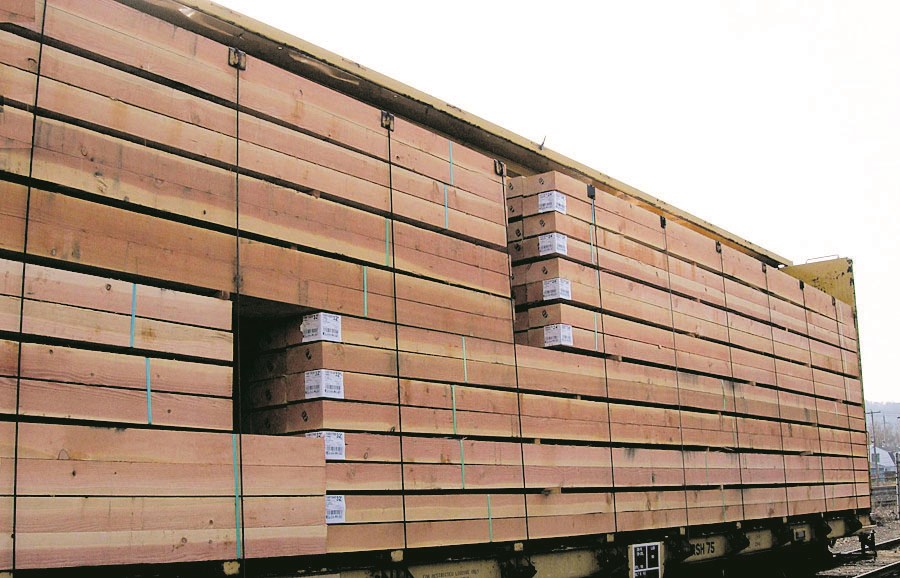The lumber industry could be cutting deep into black ink for the first time in years.
Industry analysts were cautiously optimistic already about the rebounding numbers in the U.S. construction industry, but events last week turned some minds towards unbridled excitement.
"When lumber prices sink by such a degree - from $380 [per thousand board feet] in Jan. 25 print to $355 last week Wednesday, then bounce to $370 for Feb. 01 print that is very significant. It means the market found bottom and prices are on their way back up," said Keta Kosman, editor of Madison's Lumber Reporter, a B.C.-based industry periodical. "Historically, when we have the normal U.S. home building season and normal economic cycles, the low of an annual lumber price will last at least a couple of months. This time it lasted a week and a half. I can go back over my prices to 1952 and it is extremely consistent that the U.S. starts to buy in February for spring home building season. So last week's print is an indication of where the market is going for the next three months. And that is up."
Canfor's sales department is not so daring in its forecasting, but the lumber giant's vice president of sales and marketing agrees that the mood in the forest industry is happier than any time in recent memory.
"Prices are grinding higher. We expect higher prices in 2013 versus 2012, somewhere in the neighbourhood of 10 to 15 per cent this year over last year," said Wayne Guthrie. "People are pointing to the U.S. housing recovery, but we believe firmly that it is the combination of that and a sustained demand from Asia."
The provincial government is following these developments closely, because of all the revenue a bullish forest industry can mean to the taxpayer. Unlike the petroleum or mining sectors, forestry is not specific to a region. Positive forestry ledgers means benefits to almost every community in B.C.
"The work we've spent diversifying the market is helping," said Steve Thomson, Minister of Forests. "And the supply side is helping to have sustained higher lumber prices into 2013 and that is very good news for British Columbians. "I think this will lead to increased production levels, increased jobs, and increased economic activity."
Subtracting Burns Lake's Babine Forest Products lumber from the national cache, and Prince George's Lakeland Mills amounts is not enough to affect the price of lumber, agreed Thomson and Guthrie, but there is an industry understanding that the mill industry in general is not prepared to pump out a lot more lumber to take advantage of the high prices.
Had they been able to do this, it would drive the prices back down again in the not-too-distant future.
"Now, there just isn't the infrastructure right now, so we have a much tighter market supply than usual," Guthrie explained. "I don't think you can point to one mill, but you can point to many mills closed on the continent over the past several years. They are not there, and so the mills that remain can't respond to the supply equation in enough numbers to shift the processing equation. That is the unfortunate side of the economics of the industry, but for those that remained it bodes well because the higher prices will likely be sustainable."
"The game of trying to out-wait producers for prices to drop is over. The game of actually getting their [big-volume lumber buyers] hands on supply is afoot. I expect a very upside market until at least mid-summer," said Kosman. She said the price of studs - a staple lumber product for construction - is a big example. "The supply-demand balance is so tight that one event can mess everything up. That event is going to be spring, and we are on a rocket to the moon starting last week." She didn't expect records ($440 per thousand board feet) to be broken but "one thing we can be sure of is the days of less than $350 are over."
Thomson said the best scenario would be to see mill companies take the black ink, should it come to pass, and write that on cheques to their employees, suppliers, and ideally to new purchases of equipment and technology to run operations even more efficiently in leaner times down the road. All of that, he said, trickles quickly through communities' economies.
"Lumber is a volatile market, and it will continue to be," said Guthrie. "We have a lot of bad years to make up for, but it certainly bodes well for our employees and our facilities. I think it will be a positive working environment as we go into this market cycle. Nothing goes straight up, but the trend is looking positive."



